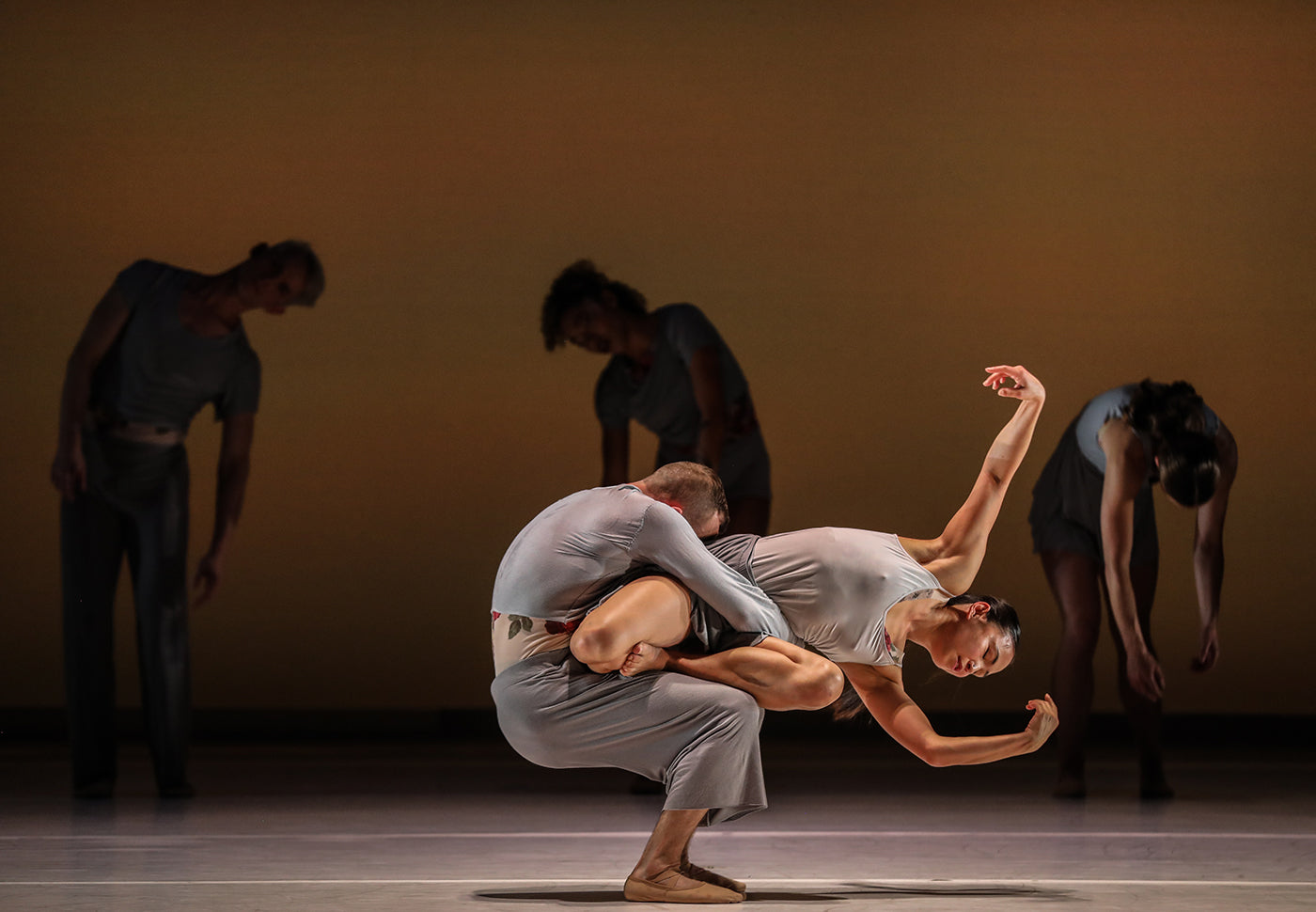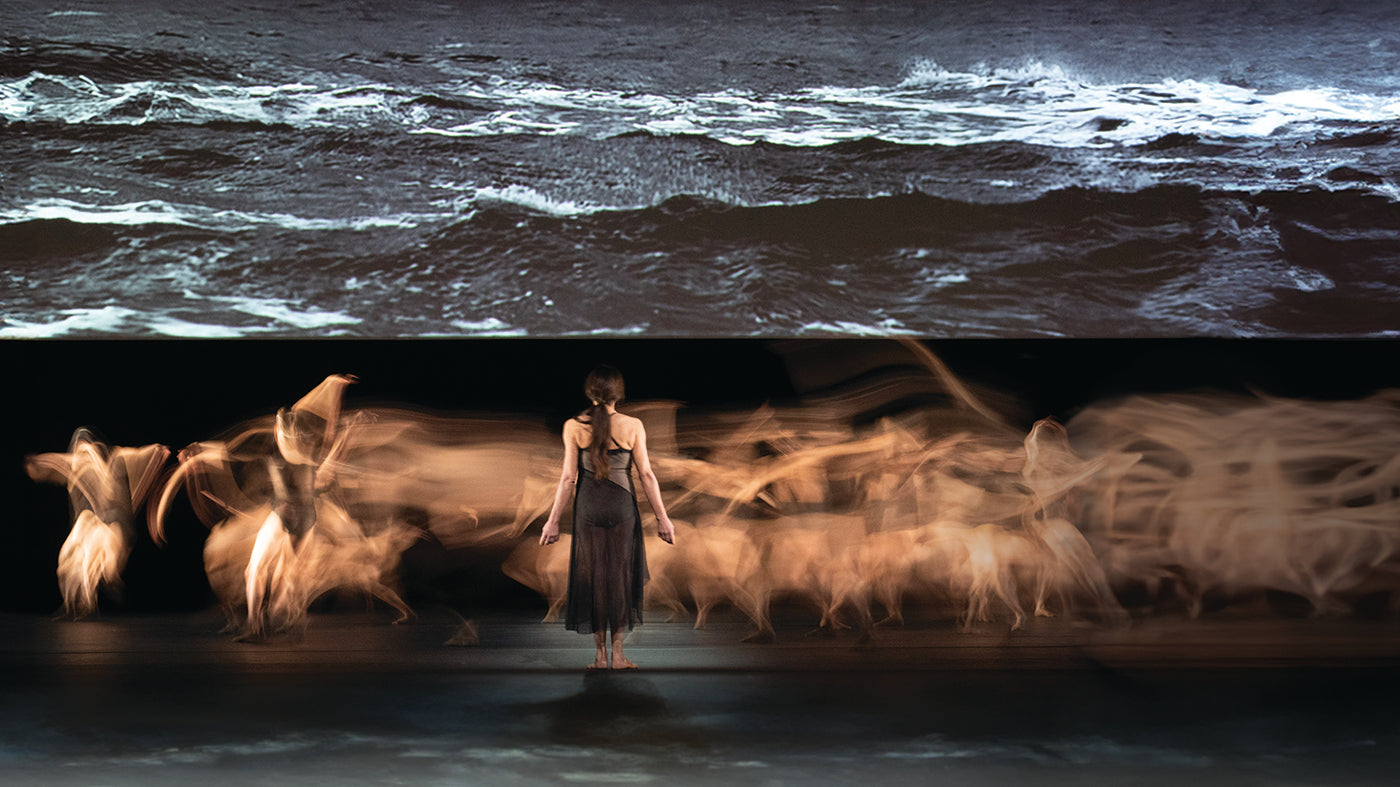I first saw the company when they last performed at the University of Texas’s Bass Concert Hall in 2010, as part of the university’s Texas Performing Arts series, and images from the final work on that program, Ieremia’s euphoric and complex “Gathering Clouds,” still conjure chills. Invited back by the university this spring for a single weekday performance, the company performed five works by Ieremia, three of which had been created since the company’s last visit. I was disappointed that this time, Ieremia was not present to introduce each work, as he had done, charmingly, in 2010. But the dancers and the works were as thrilling as ever, if a bit less optimistic in their poignancy.
As in the 2010 performance, the program began with “Minoi” (1999), which riffs on traditional Samoan slap dance and nursery songs (the traditional Samoan “Minoi, Minoi” and Sesame Street’s immortal “Pinball Number Count,” the animated series with a soundtrack of the Pointer Sisters’ syncopated counting to twelve). The medley is performed, and sung, by six bare-chested men, under low lighting that accentuates their substantial biceps and pectorals. The next work, “Pati Pati” (2009), began with women in the same V-shape as the men in “Minoi.” They beat out complicated rhythms with their fists against the floor before the group broke up into trios and duets with the men, the lights reflecting a hot red off their shoulders.
In an excerpt from “Crying Men” (2017), a trio of men were restricted to two cones of light. On stage right, a man in a tailored jacket carried another across his thighs, while on stage left, a man in an undershirt reached plaintively. This work introduced the company’s breathtaking athletics: out of nowhere, the undershirted man appeared in the air, horizontal, and soon there were guitar chords, sweat was flying, and bodies were bruising themselves in drops to the floor and with fists to thighs. Program notes for the next work, “Mother Mother” (2013), indicate that it was originally created for a music video and is an homage to Ieremia’s mother, an “unsung hero.” There was no plaintive reaching here: the work was fast and sure, and the women displayed strength to share. They remained quick but collected, moving through frieze-like shapes with men dive-rolling between them.
After intermission, the curtain rose to reveal a stage stripped of legs and backdrop, the stark environment for an abridged version of “As Night Falls” (2016). The work, Ieremia notes in the program, is meant to offer hope in a time of overwhelmingly discouraging news about tragedies and violence around the world. The music for the work is Vivaldi (“much to my surprise,” Ieremia writes, “Vivaldi stuck when all the others fell away”), which is invoked in the dancers’ organic full-body squiggles, balletic battements, athletic sprinting, and Olympian hurling of themselves into the air. To Vivaldi (as to Bach in “Gathering Clouds”), Ieremia’s choreography flourished: One dancer, aided by others, climbed over the backs of progressively taller bodies and leaped off at the edge. Towers were built and collapsed; individuals cohered into groups, like drops of mercury, until someone broke away and disrupted the attractive force. Bodies formed, draped, and tumbled; they were carried, thrown, and rolled across the floor.
Near the end of the work, the group oriented toward one downstage corner, squinting into a beam of light. They held up their hands. This seems to be the gesture of our time, evident (from my vantage point, anyway) in many new works over the last couple of seasons. The choreographers cannot be faulted, but it is unfortunate that the gesture risks becoming a trope. In “As Night Falls,” Ieremia narrowly saves “hands up” from this fate: With complexity, the dancers seemed to triumph, as their palms curled into fists and the fright in their faces morphed into anger and, eventually, back into their usual poised determinedness.









comments